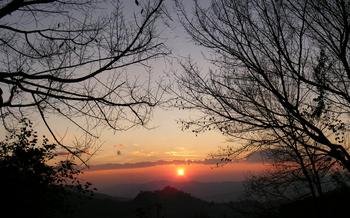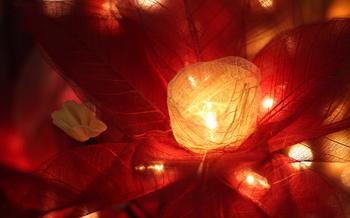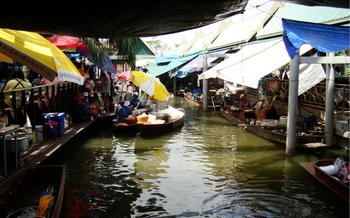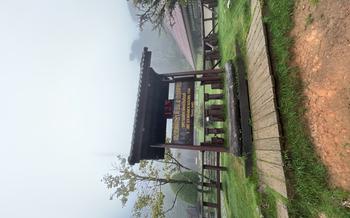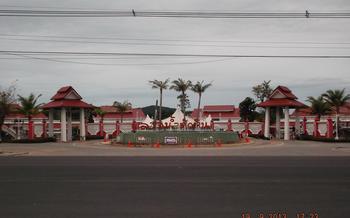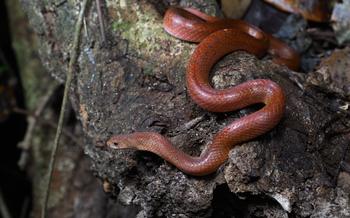
Thung Yai Naresuan Wildlife Sanctuary
- History of the sanctuary
- Biodiversity
- Getting There
- From Bangkok:
- From Kanchanaburi:
- Public Transportation:
- When to Visit
- Accommodation
- Food
- Guided Tours
- Packing List
- Conservation
- Cultural Significance
- Insider Tip
History of the sanctuary
Established in 1974, Thung Yai Naresuan Wildlife Sanctuary proudly holds the title of Thailand's largest protected area. It encompasses a vast expanse of pristine forests, towering mountains, and tranquil rivers, stretching across the provinces of Kanchanaburi and Tak. The sanctuary's creation marked a significant milestone in Thailand's conservation efforts, safeguarding a treasure trove of biodiversity and providing a haven for endangered species.
Its name, Thung Yai Naresuan, pays homage to two iconic figures in Thai history. "Thung Yai" translates to "great plains," reflecting the sanctuary's vast, open spaces. "Naresuan" honors King Naresuan the Great, a revered Thai monarch who reigned in the 16th century and is celebrated for his military prowess and unwavering defense of the kingdom. The combination of these elements captures the essence of this remarkable sanctuary, where nature's grandeur and historical significance intertwine.
Biodiversity
Flora and fauna:
The Thung Yai Naresuan Wildlife Sanctuary is home to an incredibly diverse array of flora and fauna. The sanctuary's lush forests are home to over 2,000 species of plants, including many rare and endangered species. The sanctuary is also home to a wide variety of animals, including elephants, tigers, leopards, bears, and gibbons. The sanctuary is also home to over 400 species of birds, including several endemic species.
Endemic Species:
The Thung Yai Naresuan Wildlife Sanctuary is home to several endemic species, including the Siamese crocodile, the Asian giant squirrel, and the white-rumped shama. These species are found nowhere else in the world, and the sanctuary plays a vital role in their conservation.
Threats to Biodiversity:
The Thung Yai Naresuan Wildlife Sanctuary faces a number of threats to its biodiversity, including habitat loss, hunting, and climate change. Habitat loss is a major threat to the sanctuary, as the forest is being cleared for agriculture and development. Hunting is also a major threat, as the sanctuary is home to a number of endangered species that are hunted for their fur, meat, and body parts. Climate change is also a threat to the sanctuary, as it is causing the forest to become drier and hotter, which is making it more difficult for the animals to survive.
Getting There
From Bangkok:
- Train: Take the train from Bangkok's Thonburi Railway Station to Kanchanaburi. The journey takes about two and a half hours, and the cost is around 100 baht.
- Bus: Take a bus from Bangkok's Southern Bus Terminal to Kanchanaburi. The journey takes about three and a half hours and costs around 150 baht.
- Car: Rent a car and drive from Bangkok to Kanchanaburi. The journey takes about two hours, and the cost of renting a car for a day starts at around 1,000 baht.
From Kanchanaburi:
- Songthaew: Take a songthaew (shared taxi) from Kanchanaburi to the Thung Yai Naresuan Wildlife Sanctuary. The journey takes about an hour, and the cost is around 200 baht.
- Taxi: Take a taxi from Kanchanaburi to the wildlife sanctuary. The journey takes about an hour, and the cost is around 500 baht.
Public Transportation:
Public transportation to the Thung Yai Naresuan Wildlife Sanctuary is limited, so it is best to arrange your transportation in advance. You can book a tour with a local operator or rent a car and drive yourself.
When to Visit
Best time to visit:
The best time to visit Thung Yai Naresuan Wildlife Sanctuary is during the dry season, which runs from November to April. During this time, the weather is pleasant, with cool nights and warm days. The trails are also dry and easy to hike.
Weather conditions:
The weather in Thung Yai Naresuan Wildlife Sanctuary is tropical, with two distinct seasons: the rainy season and the dry season. The rainy season runs from May to October, and during this time, the sanctuary receives a lot of rainfall. The trails can become muddy and slippery, and some areas may be inaccessible.
Tips for rainy season:
If you are planning to visit the sanctuary during the rainy season, be sure to pack rain gear and sturdy hiking boots. You should also be aware that some activities, such as hiking and wildlife watching, may be limited due to the weather conditions.
Accommodation
Thung Yai Naresuan Wildlife Sanctuary offers various accommodation options to meet the needs of travelers with different budgets and preferences. While camping is an excellent choice for those seeking an immersive experience, there are also options for those who prefer the comforts of a hotel or lodge.
Inside the Sanctuary:
- Huai Mae Khamin Ranger Station: Located within the sanctuary, this ranger station offers basic bungalows with essential amenities. While there is no electricity, the peaceful ambiance and proximity to nature make it a popular choice for budget travelers.
- Thung Yai Naresuan Wildlife Sanctuary Resort: A more comfortable option, this resort offers a range of rooms and bungalows with modern amenities, including air conditioning and private bathrooms. With its stunning views and convenient location, it's a great choice for families and those seeking a luxurious stay.
Outside the Sanctuary:
- Kanchanaburi: Located about an hour's drive from the sanctuary, Kanchanaburi offers a wide range of accommodation options to cater to various budgets. From guesthouses to mid-range hotels and luxury resorts, visitors can find something that suits their preferences.
- Sangkhlaburi: Another nearby town, Sangkhlaburi, offers a more tranquil atmosphere and several charming guesthouses and homestays. It's a great base for those seeking a relaxing getaway in nature.
Camping Options:
For those who want a truly immersive experience, camping is a great way to connect with the sanctuary's natural wonders. Several designated campsites are available within the sanctuary, offering basic facilities like restrooms and showers. Visitors must bring their own camping gear and supplies.
Food
Local Cuisine
Thung Yai Naresuan Wildlife Sanctuary offers a unique opportunity to savor authentic Thai cuisine. Local restaurants serve up a variety of dishes using fresh, locally-sourced ingredients. Don't miss out on trying popular dishes like Pad Thai, Tom Yum Goon, and Khao Pad Sapparot.
Restaurants in the Area
While dining options within the sanctuary are limited, there are several excellent restaurants located just outside. These restaurants offer a wider selection of dishes, including international cuisine. Be sure to check out Baan Rim Nam, The Blue Elephant, and The River Kwai Grill.
Picnics
Picnics are a great way to enjoy a meal while immersing yourself in the natural beauty of the sanctuary. Pack a lunch and find a secluded spot by the river or in the forest. Just remember to clean up after yourself and leave no trace.
Guided Tours
Guided tours to Thung Yai Naresuan Wildlife Sanctuary offer several advantages for visitors. First and foremost, they provide an opportunity to learn more about the sanctuary's rich biodiversity, as well as the cultural significance of the area. Experienced guides can share their knowledge about the local flora and fauna, as well as the history and traditions of the local communities.
When choosing a tour operator, it is important to select a reputable company that prioritizes responsible tourism practices and supports conservation efforts in the sanctuary. Look for tour operators that are certified by responsible tourism organizations, such as the Tourism Authority of Thailand (TAT) or the Rainforest Alliance.
The cost of guided tours to Thung Yai Naresuan Wildlife Sanctuary varies depending on the length and type of tour, as well as the number of participants. Generally, full-day tours start at around 1,500 baht per person, while multi-day tours can cost upwards of 5,000 baht. It is advisable to book tours in advance, especially during peak season, to avoid disappointment.
Packing List
When venturing into the wild, it's essential to be well-prepared with the appropriate gear and supplies. Here's a comprehensive packing list for your trip to Thung Yai Naresuan Wildlife Sanctuary:
Essential Items: - Comfortable footwear: Hiking boots or sturdy shoes with good ankle support are essential for navigating the sanctuary's rugged terrain and slippery trails. - Clothing: Pack lightweight, breathable clothing suitable for the weather conditions. Long-sleeved shirts and pants are recommended for protection against insects and the sun. - Rain gear: A raincoat or poncho is essential, especially during the rainy season. - Sun protection: Sunscreen, a hat, and sunglasses are crucial for shielding yourself from the harsh tropical sun. - Insect repellent: Keep pesky mosquitoes and other insects at bay with an effective insect repellent. - First-aid kit: Always carry a well-stocked first-aid kit for minor injuries or emergencies.
Optional Items: - Binoculars: Enhance your wildlife watching experience with a pair of binoculars to observe animals from a distance. - Camera: Capture your encounters with the sanctuary's diverse flora and fauna with a camera. - Field guide: A field guide to the wildlife of Thailand can help you identify the various species you encounter. - Flashlight or headlamp: Useful for navigating the sanctuary at night or during early morning hikes.
What to Avoid: - Bright colors: Avoid wearing bright or flashy colors, as they can attract insects and disturb wildlife. - Loud noises: Keep your voice down and avoid making loud noises, as they can scare away animals. - Perfumes or scented products: Strong scents can repel wildlife, so it's best to avoid using perfumes or scented products.
Conservation
The Thung Yai Naresuan Wildlife Sanctuary plays a crucial role in the conservation of Thailand's natural heritage. It is home to various endangered and threatened species, including tigers, elephants, and banteng. The sanctuary's vast size and diverse habitats provide a safe haven for these animals, allowing them to thrive and reproduce.
The Wildlife Conservation Society (WCS) and other conservation organizations are actively involved in conservation efforts within the sanctuary. These efforts include anti-poaching patrols, habitat restoration projects, and community outreach programs. The sanctuary also serves as a research site for scientists studying the ecology and behavior of the resident wildlife.
As visitors to the sanctuary, we can all contribute to conservation efforts by following the rules and regulations, respecting wildlife, and minimizing our impact on the environment. We can also support local conservation organizations by donating or volunteering our time. By working together, we can help ensure that the Thung Yai Naresuan Wildlife Sanctuary remains a haven for wildlife and a source of inspiration for generations to come.
Cultural Significance
Local Communities:
Thung Yai Naresuan Wildlife Sanctuary is home to several local communities, primarily belonging to the Karen and Hmong ethnic groups. These communities have a deep connection to the land and have traditionally relied on the forest for their livelihoods, practicing sustainable farming and hunting techniques. Visitors to the sanctuary can interact with these communities and learn about their unique cultures and traditions.
Cultural Heritage:
The sanctuary is also home to a rich cultural heritage. It contains several historical sites, including ancient cave paintings, spirit houses, and abandoned settlements. Visitors can explore these sites and gain a deeper understanding of the region's history and cultural significance.
Interactions with Visitors:
The local communities are generally welcoming to visitors and eager to share their culture and traditions. Visitors can engage with them through guided tours, homestays, and cultural performances. These interactions provide a unique opportunity to learn about the local way of life and foster a sense of mutual respect and understanding.
Insider Tip
Amidst the vastness of Thung Yai Naresuan, secret gems abound for those who venture off the beaten path. A hidden waterfall nestled within lush foliage, a secluded clearing teeming with wildlife, an ancient cave with intriguing rock formations—the sanctuary's mysteries are waiting to be unveiled.
For the adventurous, the off-the-beaten-path trails offer a chance to immerse themselves in the wilderness, with fewer fellow travelers and a greater likelihood of encountering wildlife. Keen-eyed explorers might catch a glimpse of a rare bird or a shy animal that seldom ventures near the more frequented areas.
For those seeking seclusion and tranquility, the sanctuary's secret spots for wildlife viewing offer a chance to connect with nature on a deeper level. Whether it's a serene lake where birds congregate or a hidden viewpoint that overlooks a stunning panorama, these hidden gems provide a sanctuary within a sanctuary—a place to escape the crowds and truly appreciate the beauty and diversity of Thung Yai Naresuan.

